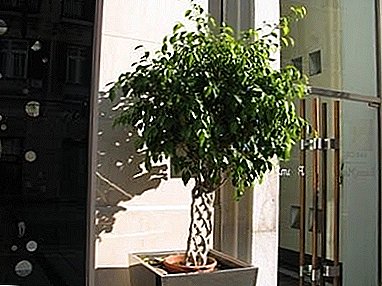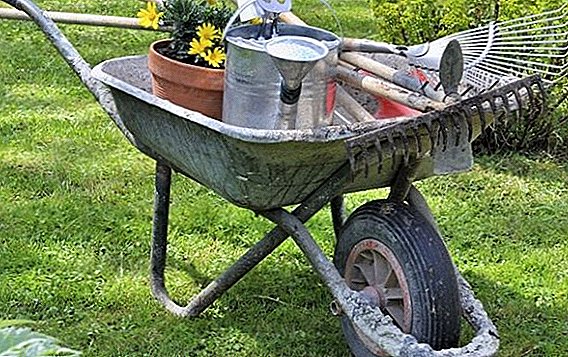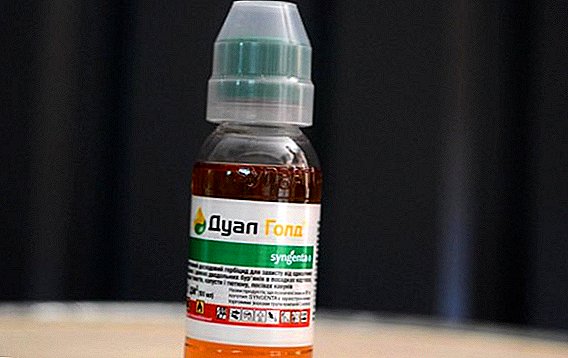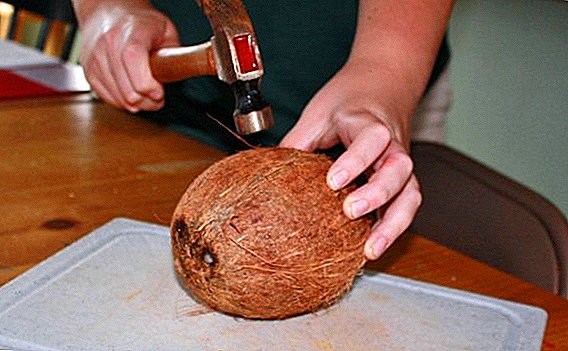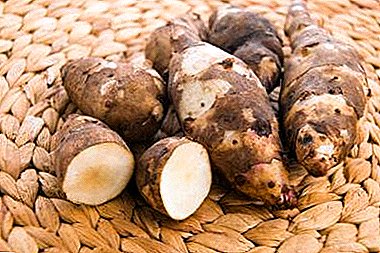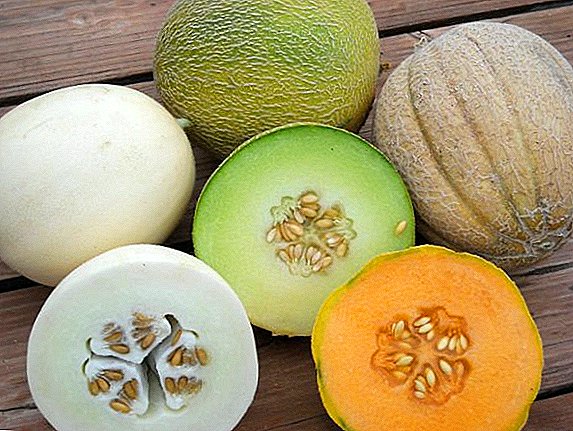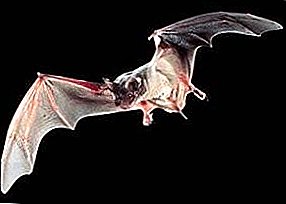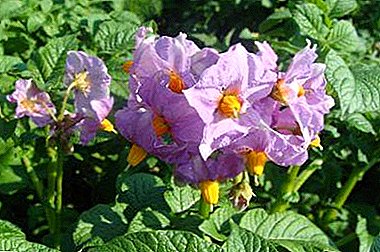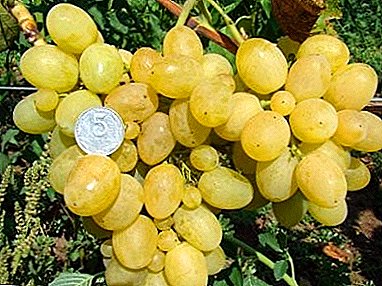
Dining rooms grape varieties For many years, are popular with buyers.
However, grapes, as you know, are quite whimsical, and cannot grow where weather conditions are unacceptable.
This forces winegrowers around the world, large and small, to engage in intensive selection of new varieties, so that the grapes can blossom where previously there were difficulties with this.
Many interesting things about the Pervozvanny grapes, as well as a description of the variety and photo of the berry, are given in the article below. The result of this breeding work of the Russian amateur grower was the variety Pervozvanny.
Grape First Called - This is a variety of white table grapes of amateur breeding, bred in Russia. The Ataman, Alpha and Bogatyanovsky belong to the white table varieties.
Breeding history
Grape variety "Pervozvanny" was launched in Russia, in the city of Novocherkassk, Rostov region. The selection of this hybrid varieties held Krainov V.N.
Like many of its other varieties, the “First-Called” was bred by VN Krainov. by crossing grape Talisman and Kishmish radiant. In addition to Novocherkassk, it is also being tested in the south of Belarus.
The hand of the same breeder belong Blagovest, Victor and Angelica.
Appearance
The bush of this variety belongs to the powerful, vigorous types of grapes. The type of flowering is oboepoly. Montepulciano, Julian and Tason also possess hermaphroditic flowers.
 Berries varieties Pervozvanny amber-white. In the sun, the berries get a pinkish shade of tan. In size, large or very large, about 27 to 24 mm. The weight of one berry can reach 10g.
Berries varieties Pervozvanny amber-white. In the sun, the berries get a pinkish shade of tan. In size, large or very large, about 27 to 24 mm. The weight of one berry can reach 10g.
In form ovoid grapes, covered with abundant wax bloom - pruino. The skin, as claimed by the breeder, is thin and eaten, the flesh is fleshy and juicy.
Although some growers report that sometimes the First Called does not reach the stated properties. The berries do not grow to 10 g, the skin is thick, that the wasp will not take.
The clusters in this variety are also rather large: 500-700 g each. They acquire a cylindrical or cylindrical-conical shape. Brushes medium density. No planting is done. Vine, as reported by the winegrowers, matures quite well, almost the entire length of the shoot. Well rooted cuttings.
Leaves at the First Called average. Basically get heart-shaped. From the center goes five blades. The degree of dissection of leaves is different. The upper part of the leaves is reticulately wrinkled, the lower part is mostly bare.
A photo




Features grade
Variety Pervozvanny refers to the varieties of early maturation. The average ripening period is from 105 to 115 days. In the latitudes of Novocherkassk, he gives a harvest in late July - early August. Pavulsky ayut, Lia and Krasny Delight are also distinguished by early ripeness.
Productivity gives high. The taste of the berries is harmonious. The sugar content of the berries is in the area of 18-21%, the acidity at the level of 6-8 g / l. The percentage of fruitful shoots of this variety is up to 60%, with a bearing ratio of 1.0-1.3. The load on the bush is about 35-45 eyes.
After the wreckage, the number of green shoots should not exceed 30-35. The optimum is considered to be a load of 25-20 eyes. Fruit arrows are cut on 6-10 eyes. Pervozvanny able to withstand cold temperatures up to -23 degrees.
In general, Pervozvanny is considered to be a rather resistant variety, which is practically not susceptible to diseases.
The stability of this variety in relation to downy mildew and gray rot is estimated at 3.5-4 points. The degree of damage by oidium is estimated at 3.5-4 points.
Diseases and pests
Variety Pervozvanny, as it was written above, has good resistance to mildew, oidium and gray rot. But this does not negate the fact that the grower does not have to protect the grapes. Such misfortunes as anthracnose, bacteriosis, chlorosis, rubella or bacterial cancer often become guests of vineyards.
Allocate biological and chemical preparations.. Biological types such as Trichodermine, Gaupsin, Actophyte are quite effective, but their use is rather expensive. Chemicals act longer, but they also cause more harm.
Chemicals should not be higher than the 2nd hazard class.
Most often, the fight against insects and diseases begins in the flowering phase of the vines. Then the eradication treatment with 3% solution of ferrous sulfate is carried out. For the control of fungal pathogens (mildew, oidium, gray mold), fungicides of systemic or contact action are used.
 To the system can be attributed Topaz, Kvadris, By-leton - they are used for prevention.
To the system can be attributed Topaz, Kvadris, By-leton - they are used for prevention.
Contact use when the disease occurs. First you need to remove the affected area, and then treat the bush drug.
To do this, suitable tools such as Rovral, Blue-Bordeaux (Bordeaux fluid).
To fight thrips, felt mites, leafworms, the drugs Aktara, Decis-Profi, BI-58 are suitable. It is important to understand that the use of these drugs is possible before flowering and as a preventive measure. It is necessary to apply these means preferably in a sunny, calm weather, while not forgetting about the means of protection.
In addition to traditional diseases that affect the grapes, the grower has two enemies: wasps and birds. Among the insects can be distinguished wasps. They are very fond of sugar, and where, if not in the vineyard, they can be found.
Wasps are not as dangerous as other insects - they do not destroy the bushes, but cause serious damage to the berries. Most often, they eat up the pulp and try to drink the juice from the berries. Sometimes, having spoiled one berry, they gently pierce the others so that fermentation would begin in them. A few days later they return for this "bodyag".
Methods of dealing with them may be different. More often winegrowers resorted to the physical destruction of wasps. One of the most effective ways is to destroy the hive. If he is not found, then baits are placed next to the vines.
Before the grapes bloom, the wasps are fattening protein foods. Therefore, experienced growers are advised to hang on pieces the pieces of fish or meat that were previously soaked in Imidacloprid. When the grapes begin to bloom, the wasps can be distracted from it with the help of traps with a sweet solution. You can add honey or sugar, as well as drugs Aktara or Regent.
Drugs can be replaced with a solution of boric acid. Here we must remember that the wasps do not fall under the water. Therefore, it is better to add a little liquid soap to the solution. There are more humane ways. Ripening clusters can be wrapped in tulle or agrofiber bags.
Protective screen protect berries from wasps. In this case, bags of gauze is better not to sew, because, soaking wet, it sticks to the berries. Best suited bags of caprone. From birds as a protection can serve as a grid along the bushes or a ratchet, which will scare the feathered invaders with a sound.
The Pervozvanny grape variety can grow well in the southern outskirts of Russia. It blooms quickly, gives a weighty harvest. It has good resistance to "grape" diseases, but, like any other grapes, requires careful care.


